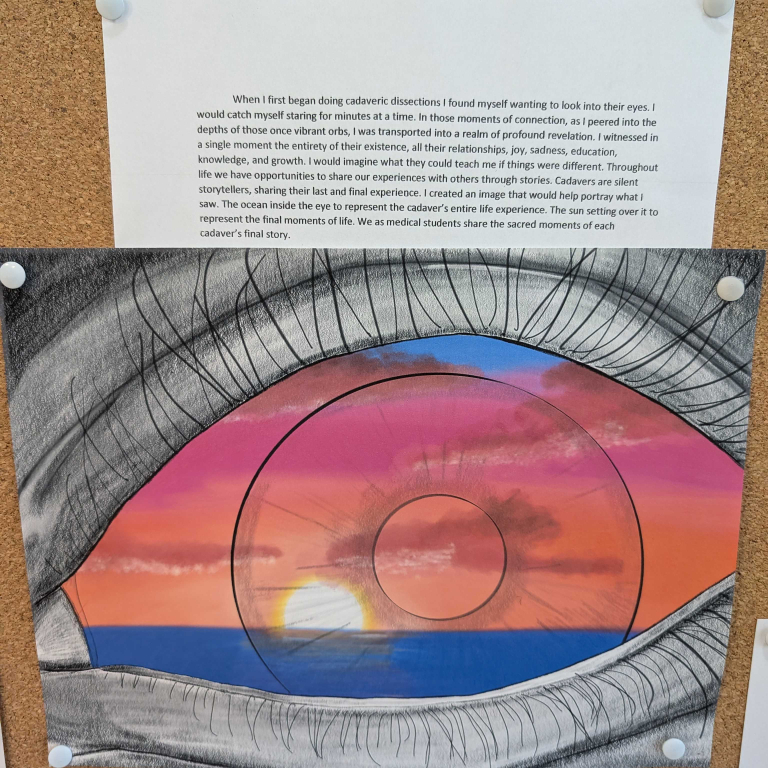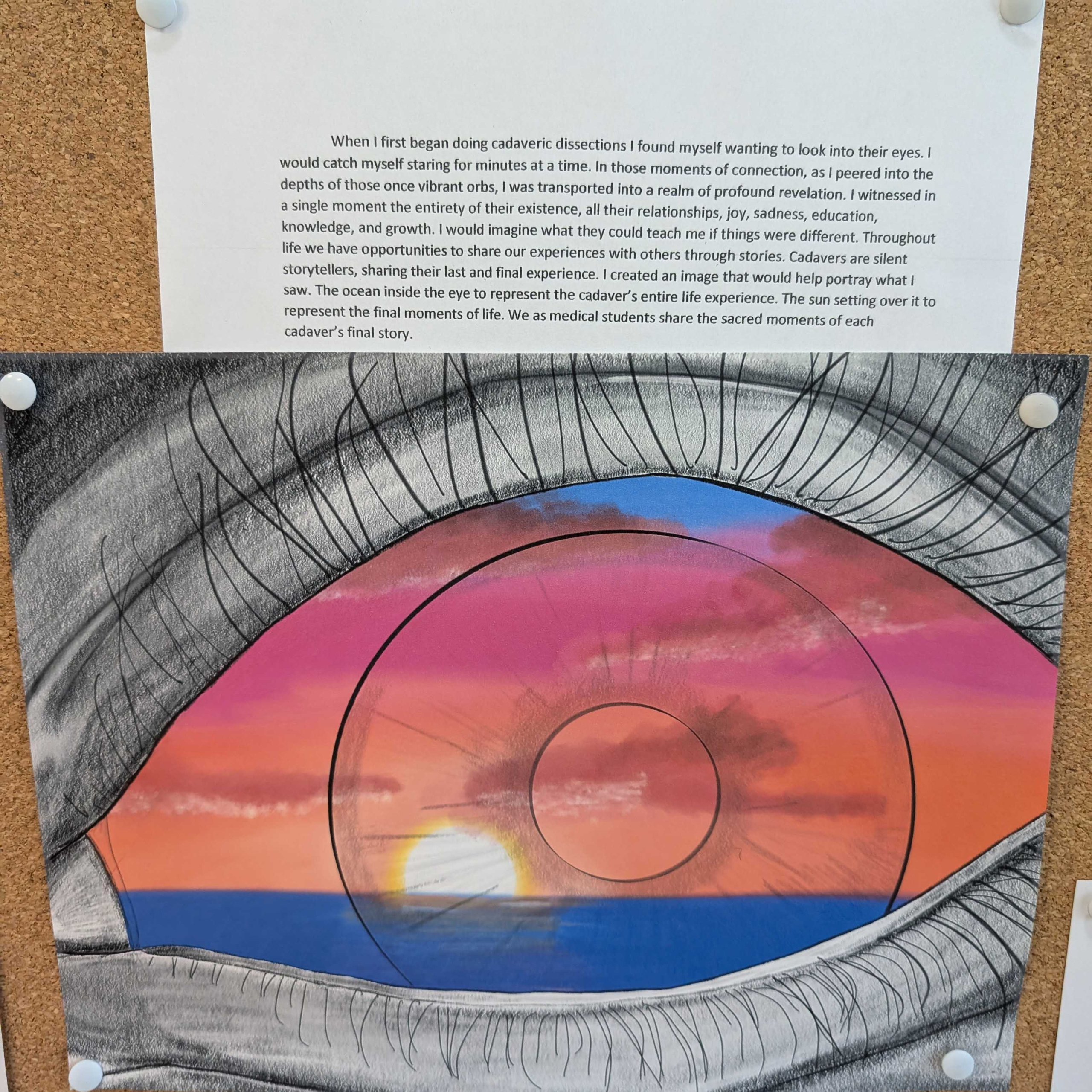ATSU-KCOM students express wide range of talents with anatomy course art project
Posted: September 26, 2024
The sun sets on the ocean’s horizon, casting brilliant hues of orange and red across the sky.
Simple enough, but now, back out a bit.
This scene is set inside an eye, the iris and other features drawn in great, careful detail. It’s accompanied by an essay.
“When I first began doing cadaveric dissections, I found myself wanting to look into their eyes. I would catch myself staring for minutes at a time. In those moments of connection, as I peered into the depths of those once vibrant orbs, I was transported into a realm of profound revelation. I witnessed in a single moment the entirety of their existence, all their relationships, joy, sadness, education, knowledge, and growth. I would imagine what they could teach me if things were different.
“Throughout life we have opportunities to share our experiences with others through stories. Cadavers are silent storytellers, sharing their last and final experience. I created an image that would help portray what I saw. The ocean inside the eye to represent the cadaver’s entire life experience. The sun setting over it to represent the final moments of life.
“We as medical students share the sacred moments of each cadaver’s final story.”
This anonymous work was created by an A.T. Still University-Kirksville College of Osteopathic Medicine first-year student, part of a special project in their Gross Anatomy course. Sara Funk, DPT, assistant professor, anatomy, was in her first year leading the course, grading exams, when she had an idea.
“On the practical (exam) sometimes, students put little drawings to help them remember things. I was talking to one of my students about her drawings, they were really good. It got me thinking, these are high-achieving people. There’s a lot of other sides to them beyond medicine, beyond science, that we do not see, but are also really important to them,” Dr. Funk said. “I wanted them to have a chance to express their experiences in a way outside of traditional science.”
She came up with an optional assignment. There was no direction on format or parameters. No restrictions of any kind. The only guidance was the resulting work should offer a personal reflection on the student’s experience in the cadaver lab, dissecting the donor bodies.
Dr. Funk thought maybe 20 students would complete the project. The final tally was closer to 100.
“A lot of them either wrote essays reflecting on their time in the anatomy lab, with their cadavers, which they call their first patients. A lot of them did art projects like watercolors, drawings. Some of them did children’s books. Some of them did puzzles and crochet, and all kinds of different, creative projects,” she said. “I think it was very cathartic for many of them.”
The projects were completed in May. In late August, they were put on display for an afternoon exhibition within the Steinbaum-Levine Legacy Hall. Tables and walls were filled with essays, drawings, paintings, and more. It was an opportunity for the students, now in their second year, to see their work, and for the first-year students to get a glimpse at a project Dr. Funk said she plans to make a regular part of her gross anatomy course.
Another display will be assembled for the Gift of Body Ceremony this fall, an annual event honoring those who gifted their bodies to the University, and their families.
“The families do not always get the perspective of what this means to the students,” Dr. Funk said. “This is a really nice way to honor that experience.”























